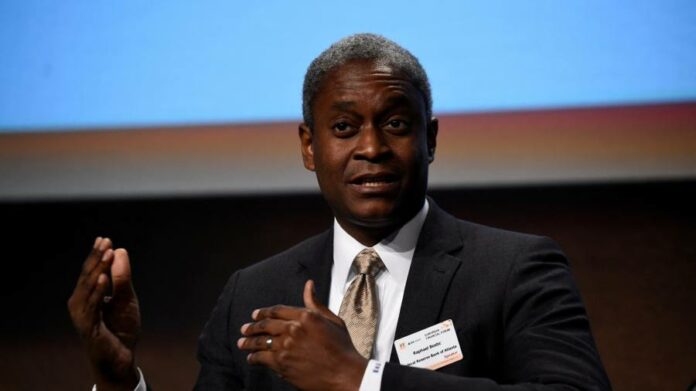Federal Reserve officials on Friday defended their decision to press ahead with their monetary tightening campaign this week despite ongoing stress across the US banking sector, citing continued concerns about elevated inflation.
On Wednesday the central bank raised rates by a quarter point for the second time in a row, lifting federal funds rate to a new target range of 4.75 per cent to 5 per cent, even as midsized lenders struggled to weather the fallout from the implosion of Silicon Valley Bank.
“There was a lot of debate . . . but at the end of the day, what we decided was there’s clear signs that the banking system is sound and resilient,” Raphael Bostic, president of the Atlanta Fed, said in an interview with NPR on Friday. “And with that as a backdrop, inflation is still too high.”
In the press conference that followed Wednesday’s rate decision, Fed chair Jay Powell acknowledged officials had considered pausing their campaign of rate rises in light of the recent banking turmoil, but said that ultimately an increase was “supported by a very strong consensus”.
He noted, however, that there was still uncertainty about the extent to which a credit crunch would result from reduced activity at small and regional banks, comments that suggested the Fed could be closing in on the end of its tightening campaign.
While the Fed’s policy statement noted that “some additional policy firming may be appropriate”, Powell emphasised to reporters the significance of the words “some” and “may”.
Speaking on Friday, St Louis Fed president James Bullard played down the impact of the current banking turmoil on the US economy, suggesting that it was unlikely to result in a material shock.
“Financial stress can be harrowing but also tends to reduce the level of interest rates,” he said. “Lower rates, in turn, tend to be a bullish factor for the macroeconomy.”
Bullard also cited similar incidents in the 1980s and 1990s — such as the failure of hedge fund Long-Term Capital Management — arguing that they “received considerable attention at the time, but were not ultimately harbingers of poor US macroeconomic performance”.
He reiterated Bostic’s comments on price pressures, saying inflation remains “too high” and arguing the central bank was right to continue squeezing the economy since it has the tools to stabilise the financial system. “Appropriate monetary policy can continue to put downward pressure on inflation,” he said.
Benchmark 10-year Treasury yields have declined by more than half a percentage point to 3.32 per cent since the collapse of SVB, while the two-year yield has fallen more than a percentage point to 3.63 per cent. The two-year yield in particular is sensitive to interest rate expectations, and has recorded its biggest moves since 1987 in recent weeks.
Investors in the futures market on Friday have now fully priced out the possibility of an additional quarter-point increase in May. Traders also wager the Fed will be forced to cut interest rates this year — something Powell said the Fed does not expect to do.






